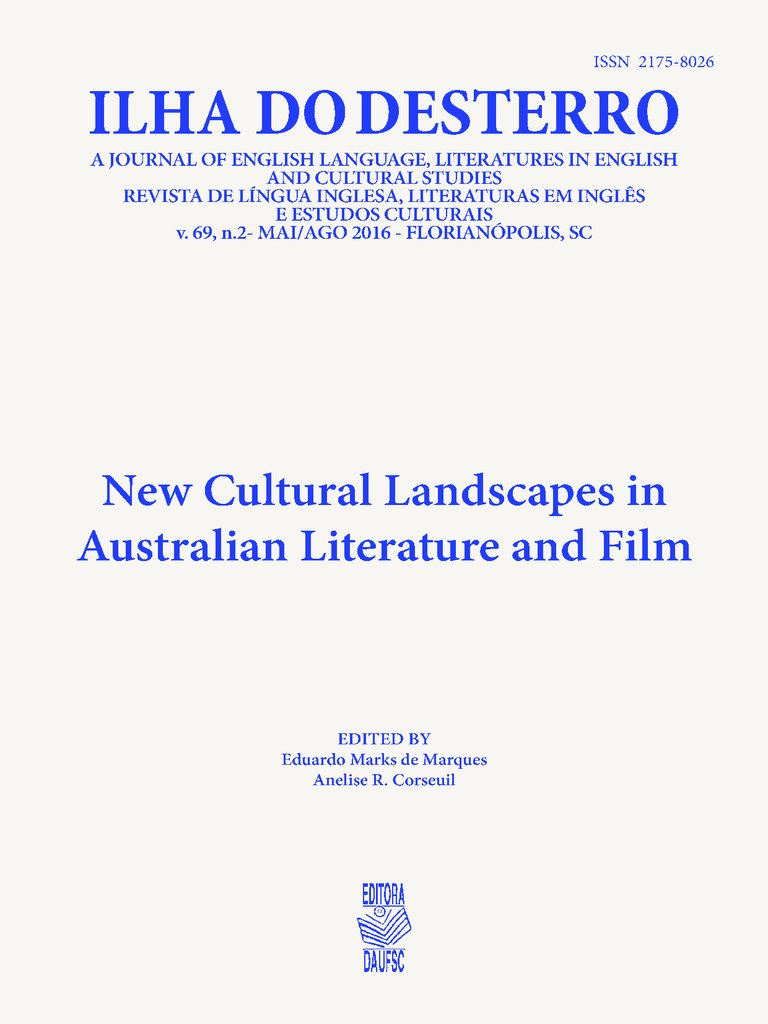Postcolonial Issues and Colonial Closures: Portrayals of Ambivalence in Shaun Tan’s The Arrival
DOI:
https://doi.org/10.5007/2175-8026.2016v69n2p63Resumo
This article aims to investigate the visual representation of the connection between immigration and the construction of an Australian identity as a nation in Shaun Tan’s graphic novel The Arrival (2006). Based on the debate about imagined communities and the ambivalence on the narration of a nation, proposed by Benedict Anderson and Homi Bhabha, we will discuss how The Arrival creates moments for the appearance of the ambivalence of cultural difference at the same time that it also constructs a horizontal imagined community. On these terms, The Arrival depicts some of the liminal positionality that immigrants have to deal when they arrive in a new place, but also constructs a cohesive and homogeneous narrative that entails the assimilation of the immigrants. In other words, this work offers a closure that can be read as an assimilation of the colonial discourse for a series post-colonial issues.
Referências
Anderson, Benedict. Imagined Communities: Reflections on the Origin and Spread of Nationalism. London: Verso, 2006. Print.
Bhabha, Homi K. “DissemiNation: Time, Narrative, and the Margins of the Modern Nation.” The Location of Culture. London: Routledge, 1994. 199–244. Print.
---. “The Commitment to Theory.” The Location of Culture. London: Routledge, 1994. 199–244. Print.
Boatright, Michael D. “Graphic Journeys: Graphic Novels’ Representations of Immigrant Experiences.” Journal of Adolescent & Adult Literacy 53.6 (2010): 468–476. Print.
Hatfield, Charles. Alternative Comics: An Emerging Literature. Jackson: University Press of Mississippi, 2005. Print.
Huggan, Graham. Australian Literature: Postcolonialism, Racism, Transnationalism. New York: Oxford University Press, 2007. Print.
Jupp, James. From White Australia to Woomera: The Story of Australian Immigration. Melbourne: Cambridge University Press, 2007. Print.
Jupp, James, and Michael Clyne. Multiculturalism and Integration: A Harmonious Relationship. Canberra: ANU E Press, 2011. Print.
McCloud, Scott. Understanding Comics. New York: Harper Collins, 1993. Print.
Patrick, Kevin. “In Search of the Great Australian (graphic) Novel.” Australasian Journal of Popular Culture 1.1 (2012): 51–66. Print.
Tan, Shaun. “The Accidental Graphic Novelist.” Bookbird: A Journal of International Children’s Literture 48.4 (2011): 1–9. Print.
---. The Arrival. New York: Scholastic, 2006. Print.
Downloads
Publicado
Edição
Seção
Licença
A revista Ilha do Desterro publica artigos e resenhas inéditos, referentes as áreas de Inglês, Literaturas em Língua Inglesa e Estudos Culturais. Publica volumes mistos e/ou temáticos, com artigos e resenhas em inglês e português.
Autores mantém os direitos autorais e concedem à revista o direito de primeira publicação, com o trabalho simultaneamente licenciado sob a Licença Creative Commons Attribution que permite o compartilhamento do trabalho com reconhecimento da autoria e publicação inicial nesta revista.

This work is licensed under a Creative Commons Attribution 4.0 International License.



